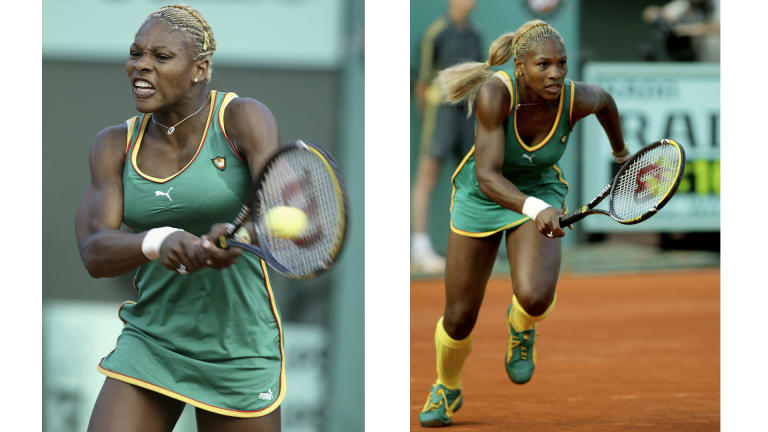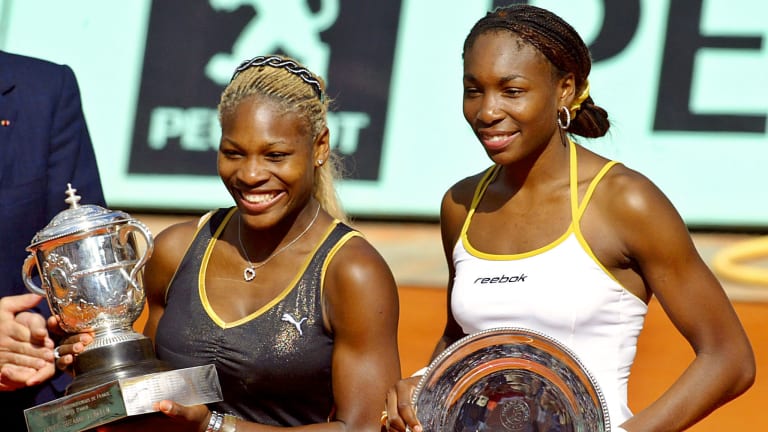Style Points
Style Points Flashback: Serena Williams wears banned Cameroon kit at 2002 Roland Garros
By May 30, 2022Style Points
Spotted: Carlos Alcaraz checks out Roger Federer’s ultra-rare Rolex at Laver Cup
By Sep 24, 2025Style Points
From ‘Andre Swagassi’ to ‘Billie Jean Bling’, meet Naomi Osaka’s Labubu crew
By Sep 04, 2025Style Points
"Superstition" keeps Naomi Osaka in purple over rosier US Open ensemble
By Sep 04, 2025Style Points
PHOTOS: Every outfit Venus Williams wore at the 2025 US Open
By Aug 30, 2025Style Points
A Jessica Pegula superfan gets a unique item signed at the US Open—one year later
By Aug 29, 2025Style Points
US Open Fashion Watch: Venus, Djokovic and Osaka lead the style charge in New York
By Aug 28, 2025Style Points
"It must have fire": Aryna Sabalenka helps create limited-edition Wilson Blade racquet
By Aug 27, 2025Style Points
Paint the town red: Coco Gauff, Naomi Osaka—and her custom Labubu—ace US Open trend
By Aug 27, 2025Style Points
“An opportunity I couldn't turn down”: Jack Draper reveals how Vuori deal happened
By Aug 25, 2025Style Points Flashback: Serena Williams wears banned Cameroon kit at 2002 Roland Garros
It’s not often that the World Cup overlaps with the French Open. But when it happened in 2002, a 20-year-old Serena Williams turned heads with a classic Puma kit in support of the African champions.
Published May 30, 2022
Advertising

Serena's 2002 Roland Garros outfit was inspired by the Cameroon national team, from the yellow high socks to the scandalous sleeveless top.
© Getty Images/Composite
Advertising

Cameroon's sleeveless shirts were banned from the 2002 World Cup, but made an appearance during pre-tournament friendlies.
© 2002 Getty Images

By the final, Serena had swapped her Cameroon kit for a black and gold dress by Puma at the French Open.
© AFP via Getty Images